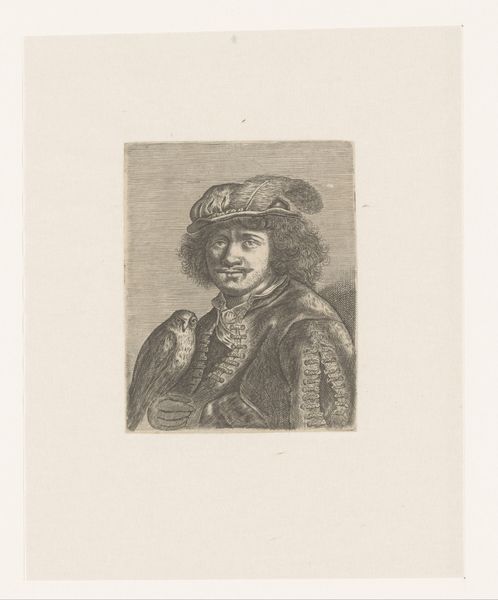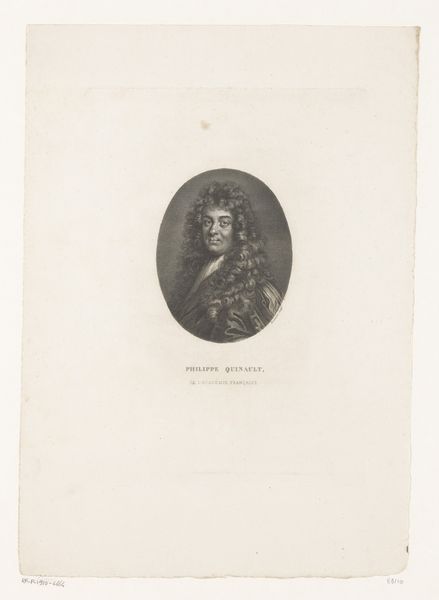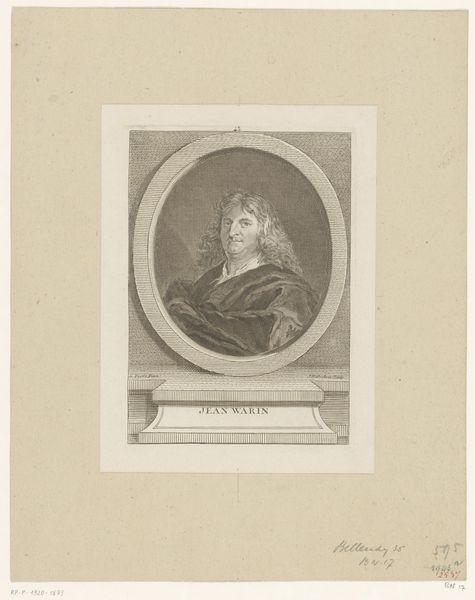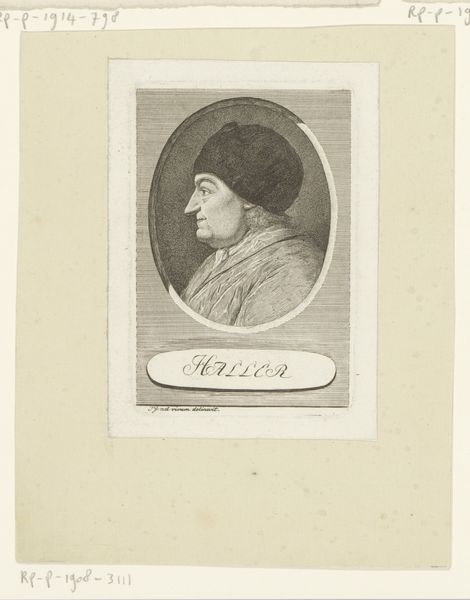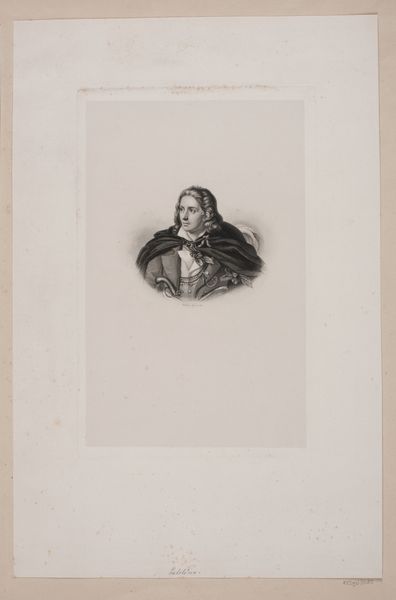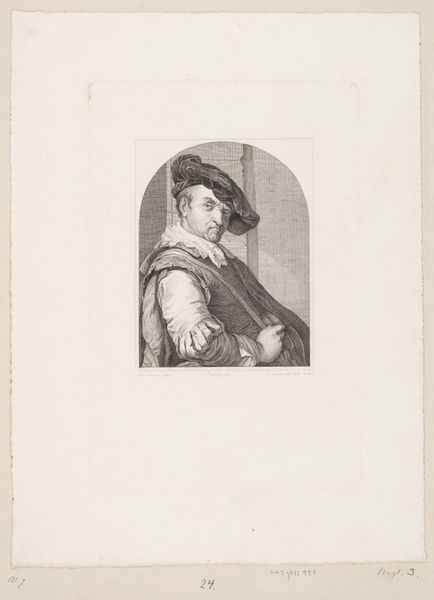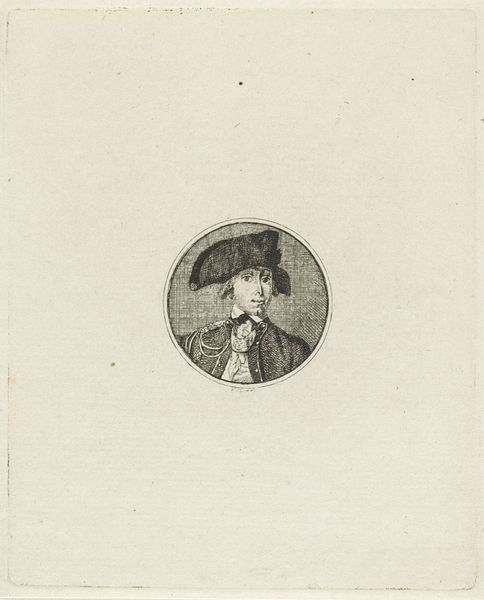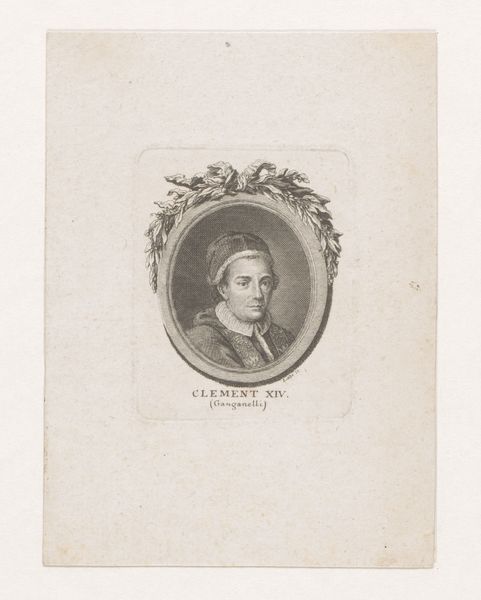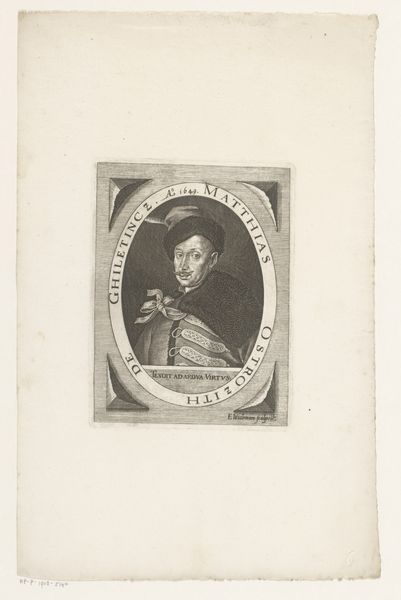
drawing, pencil
#
portrait
#
drawing
#
11_renaissance
#
pencil
#
academic-art
#
realism
Dimensions: height 242 mm, width 188 mm
Copyright: Rijks Museum: Open Domain
Curator: This is a pencil drawing titled "Portret van Filips de Schone," or "Portrait of Philip the Fair," attributed to Joseph Delboëte, and thought to be created sometime between 1835 and 1875. Editor: My first thought is one of contained melancholy. It’s such a precisely rendered image, and yet that serious expression gives the impression that this royal figure feels trapped. Curator: Indeed. Delboëte’s academic style is evident in the precise rendering of the face and clothing, a kind of realist style applied to depicting a historical personage from centuries earlier, during the Renaissance. Think about the labor involved, reproducing details from paintings into this drawn version. Editor: And the symbols are right there on display: the heavy chain, the opulent hat. It's interesting how costume can become its own language, speaking to power, wealth, and belonging. The artist has captured the accoutrements of nobility but also, maybe, a sense of the psychological burden that such finery represents. Curator: The pencil as a material offers something too, wouldn't you say? Consider the ubiquity of pencil drawing in art education during the 19th century, teaching artists to meticulously copy and render the human form. Editor: That makes me think about the almost ghostly quality here. Philip the Fair appears both present and distant, conjured from the past. Those Renaissance portraits solidified certain codes of representation and communicating royal status. It has influenced the way that the idea of royal portraiture has persisted in our collective psyche. Curator: Right, this is the rendering of a portrait, based on an existing Renaissance era portrait. A copy removed by many steps from its production during Philip's lifetime. That says something about its own moment of creation in the mid-19th century. Editor: Seeing this depiction makes one reflect on enduring ideas of leadership. Curator: Absolutely. From the vantage point of materials, it illustrates the circulation of historical representation in the artistic sphere. Editor: It seems an effective emblem of remembrance—of how powerful images linger long in our minds.
Comments
No comments
Be the first to comment and join the conversation on the ultimate creative platform.
